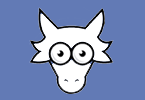Writing for kids is fun, but that doesn’t mean it’s easy. Your story has to make sense under a very tight word limit, as well as lend itself to captivating illustrations. Here are some suggestions for coming up with awesome story ideas and crafting memorable stories for kids.
1. Act silly to get into the mood
Perhaps I’ve never grown up entirely, perhaps I’m just a good actress, but at certain moments every day I act silly. Those who live with me are used to the numerous celebrity voices that fly out of my mouth as I pretend to be various characters. Make-believe is important to children. It’s important to the writer, too.
2. Spend time with children
They are your target audience, so it’s important to observe them, listen to them, play with them, or even read to them if you can. You’ll get a very good idea of what they like and dislike.
3. Go to bookstores or libraries and read the picture books
Writers are told repeatedly to read, read, read. It’s solid advice for this genre as well. It’s important to know what kinds of books are being published. You can also do some industrial espionage and ask store clerks which books are the biggest sellers.
4. Tune in to children’s TV shows
When my kids were little they were hooked on Sesame Street (still going strong all these years later). But since then, many other shows have been created. You won’t necessarily be familiar with them if you’re not a kid or don’t have any kids.
A quick Google search revealed that SpongeBob Squarepants, The Floogals, Dora the Explorer, and Ruff-ruff, Tweet and Dave are among the current TV offerings. Who knew?
These shows reflect the modern kid’s mindset and taste. You can take the best of them as inspiration for your own writing.
5. Write your story in crayon
I have written some stories entirely in crayon. Of course, that’s not how I submit them to an editor, but I do find my ideas spill onto the pages of my spiral notebook much more freely in crayon form.
Kids love crayons; I used to love them, too. And just to prove my point, what should I spot during a recent trip to the bookstore but a picture book titled The Day the Crayons Quit by Drew Daywalt (with pictures by Oliver Jeffers). Most of the words in the book appear as if they’re in crayon along with many of the drawings. Very cool idea.
6. Think visually
Pictures play an obviously integral role in picture books. While I didn’t do the artwork for my children’s story Maxwell Mouse, the Powerhouse, I knew my words would have to be descriptive enough for the artist to illustrate it. (As far as I can tell, unless you are both the artist and writer of a children’s story, the editor will hire an artist of his/her choosing to illustrate your story, and you will have little to no input in the process.)
It helped that I have written and sold many children’s greeting card verses in the past. For those cards I had to think visually and let the editor know how I pictured the art to go with my copy.
7. Choose a catchy title
I believe book titles are super important when it comes to kids. To me, the more “out there”, the better. Here are some of the picture book titles I noted on that recent trip to the bookstore: Lady Pancake and Sir French Toast, Tallulah’s Tutu, An Octopus Named Mom, and Is Your Buffalo Ready for Kindergarten?
8. Make every word count
Picture books vary in length. I’ve seen some with as few as ten words, all spread out throughout the pages. According to Barbara Seuling in her book, How To Write a Children’s Book and Get It Published, “the average picture book story is 1000 words long, or four typewritten, double-spaced pages.” But many books have far less words. So your words need to be chosen carefully, especially if your story is even shorter than average.
9. Try revamping a fairy tale
In The True Story of the Three Little Pigs, author Jon Scieszka tells the tale from the wolf’s point of view. It’s a hilarious account of how the poor wolf, suffering from allergies, was framed, never intending to huff and puff and blow all those pigs’ houses down.
It’s a very clever idea, putting a twist on the original story, one other writers might attempt as well. Certainly, there are other famous fairy tales one could tell from another character’s perspective. What if The Little Red Hen was told from the other animals’ viewpoints: “All we wanted to do was chill but that bossy hen kept trying to put us to work!”
Which brings me to…
10. Make ‘em laugh
Kids love to laugh. And need to laugh. We all do. If you do it right, you might be laughing all the way to the bank to cash in your royalty checks.




